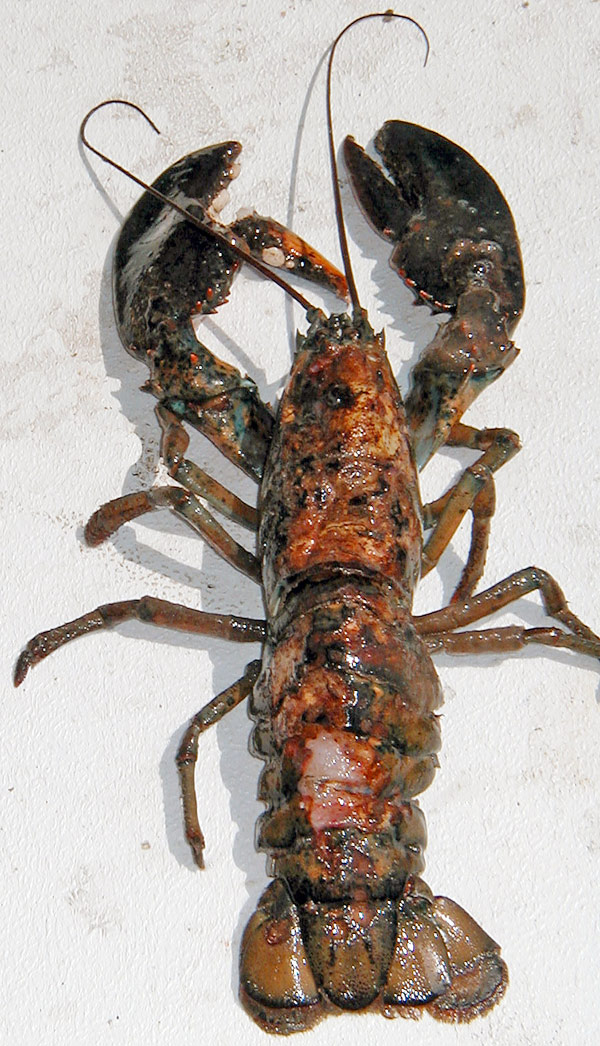Lobsters are bottom-dwelling decapod crustaceans making up the family Nephropidae (also called Homaridae). The most familiar and commercially important lobsters are large-clawed ones possessing a hard protective exoskeleton and belonging to the genus Homarus. Two species, the American lobster (H. americanus) and the European lobster (H. gammarus), are found along the northern Atlantic coasts of North America and Europe, respectively. The American species supports one of the largest shellfish fisheries in the world, estimated at more than $400 million, so much effort is concerned with the prevention of any disease that can affect these animals. See also: Arthropoda; Crustacea; Decapoda; Fisheries ecology; Malacostraca; Marine fisheries
An especially aggressive pathological condition in lobsters is epizootic shell disease. The bacteria that cause this cutaneous disease eat away at the animals' shells, causing deep body lesions. These lesions are extremely unattractive, discoloring the outer shells of the lobsters and making them completely unmarketable; thus, the disease can be devastating economically. Losses also accrue because, although the disease is usually not fatal, affected lobsters are more prone to contamination by secondary invaders. Furthermore, deaths can occur if the bacterial infection becomes extreme, stressing the lobsters and preventing them from molting properly. Although the condition has been observed in Europe (most notably in Norway), most cases overwhelmingly plague southern New England, especially in the waters of Long Island Sound, including Long Island (New York), Connecticut, Rhode Island, and southern Massachusetts. Since 2000, the prevalence of disease in these affected areas has reached 20–38% annually. Marine biologists and lobster fishery personnel fear that the disease will eventually spread to more northern waters, including those along Cape Cod (Massachusetts), Maine, and Nova Scotia (Canada), which are home to the largest and most economically important lobster breeding grounds. See also: Disease; Invertebrate pathology; Marine conservation; Pathogen; Pathology; Population ecology

So far, investigators have determined that the characteristic lesions are caused by pathogenic bacteria that invade a lobster through the surface of its shell. However, the exact causative agent (or agents, if multiple bacterial species are at work) has not been identified. In addition, recent research indicates that other pressures in the environment, including pollutants and warming water temperatures, might be assisting the spread of the disease. A variety of contributing factors will therefore need to be taken into account to minimize this condition. See also: Marine ecology; Species and global climate change; Water conservation





